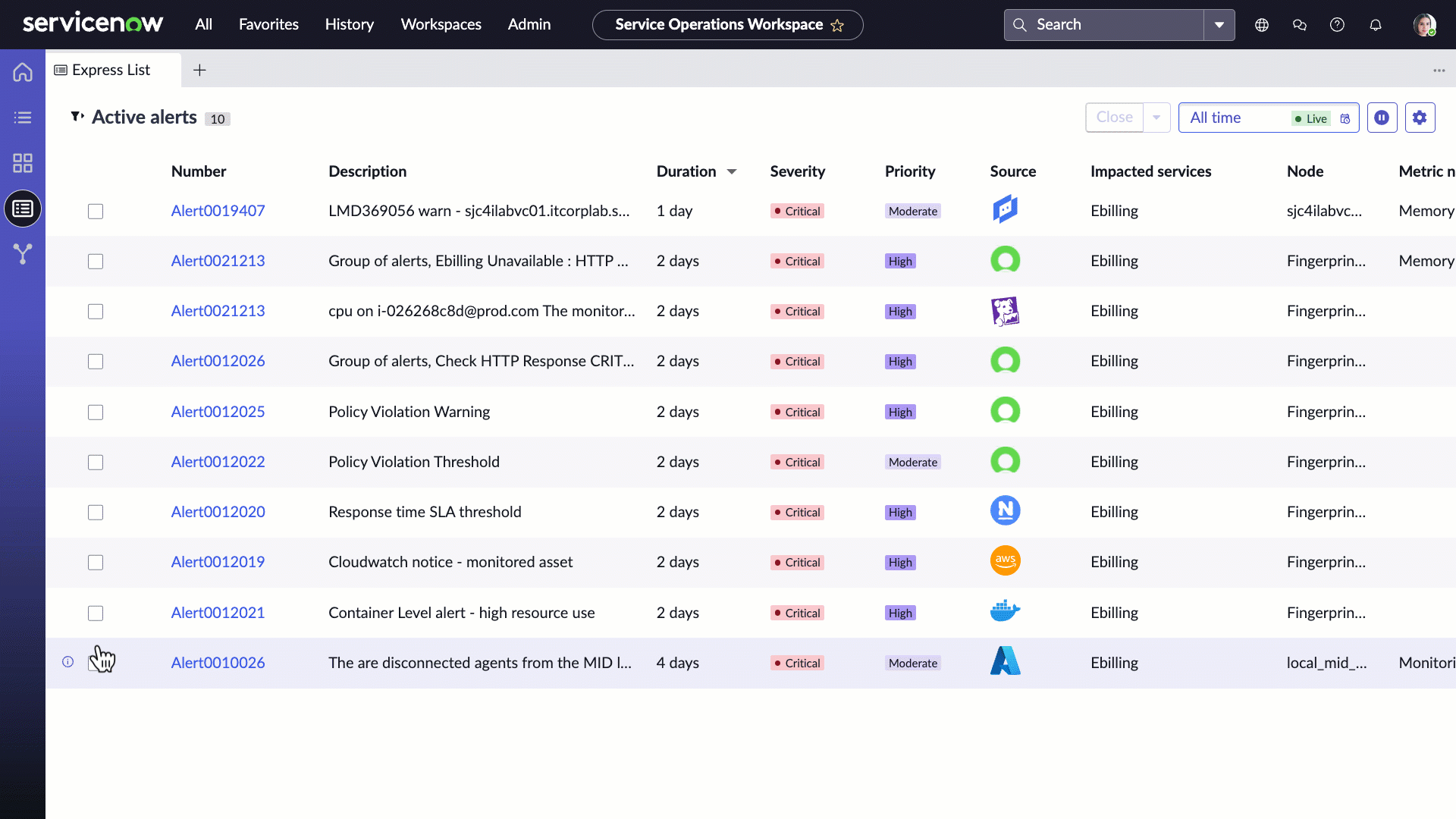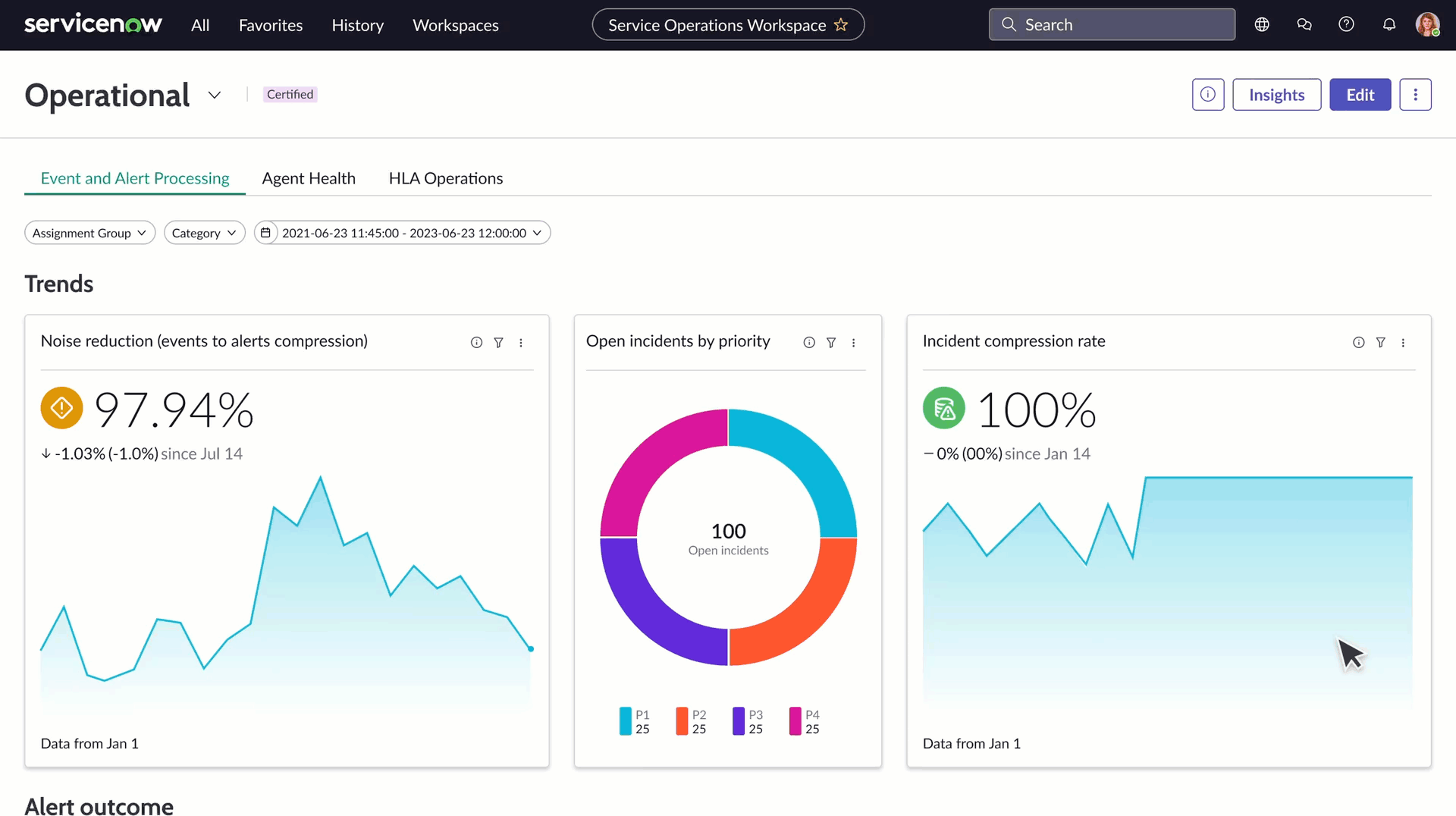 CLOUD
CLOUD
 CLOUD
CLOUD
 CLOUD
CLOUD
Enterprise workflow software giant ServiceNow Inc. is beefing up its platform with yet another dose of generative artificial intelligence capabilities.
The new features, which come as part of the new Washington D.C. release, are designed to enhance the existing Now Assist generative AI experiences, which deliver embedded, intelligent automation across the company’s platform.
The Now Platform Washington, D.C. release is the company’s first major update of the year, building upon an aggressive push to integrate sophisticated generative AI capabilities across its workflow platform. Most of those efforts, which began last year, are focused on the company’s Now Assist family of AI agents, which integrate with ServiceNow’s IT Service Management, Customer Services Management, Human Resources Services Delivery and Workflow Creator modules.
ServiceNow’s namesake cloud platform helps information technology and human resources teams manage their day-to-day work. Administrators can use the platform to answer employee support requests, tackle cybersecurity risks and perform other tasks. ServiceNow’s software is also used outside IT departments for tasks such as processing customer service tickets.
The new features in today’s update include Now Assist for IT Operations Management AIOps, which applies generative AI to speed up issue resolution by analyzing alerts and providing useful context for operations teams. More specifically, the generative AI agent helps to translate complex, jargon-littered alerts generated by machines into simple natural language notifications that will help teams to better understand the issues they need to deal with. This will not only help teams to resolve issues faster, but also aid in the prevention of problems, ServiceNow said.

Meanwhile, the existing Now Assist in Virtual Agent feature that was launched in June 2023 is getting some new design capabilities. Now Assist in Virtual Agent allows customer service teams to create customized chatbots that combine AI Search and Service Catalog Items with generative AI chat to speed up customer issue resolution through a more conversational, self-service experience. The new generative AI-enabled Virtual Agent Designer and integrated dynamic translation features will enrich the development experience, making it quicker and easier for teams to create more accurate and reliable models.
The Virtual Agent Designer is meant to solve the headaches caused by the variations in how customers communicate with chatbots, helping developers to create more customized conversational automations to improve self-service. Meanwhile, the dynamic translation feature helps to detect the language of text inputs, so the chatbot can automatically respond in the same language, providing simple, real-time localization.

The company also introduced a family of Impact AI Accelerators within ServiceNow Impact, which is a “value acceleration” platform designed to help companies accelerate time to value with their ServiceNow investments. The new Impact AI Accelerators are said to make it easier to adopt the company’s generative AI experiences, map their investments to business objectives and track the value that these features create. They include a mix of expert support, demos and training to assist teams as they integrate generative AI into existing workflows.
ServiceNow’s Now Assist family of generative AI agents is powered by the domain-specific Now large language model, which has been trained on the company’s own data and workflows. Customers can also feed their own ServiceNow data into the Now LLM to enhance its ability to perform very specific tasks related to their own business operations. The design of the Now LLM ensures a better user experience with full transparency and superior governance and data security, the company says.
On Monday, ServiceNow also revealed it’s partnering with Nvidia Corp. to take advantage of the new Nvidia NIM inference microservices. That will make it simpler for teams to create and deploy new LLMs based on Now, and do it much more quickly, in order to accelerate generative AI deployment, the company said.
Jon Sigler, ServiceNow’s senior vice president of platform, said the combination of human intelligence and AI results in a new level of simplicity for workforces that will drive better business outcomes. The challenge for companies is that they need to deploy generative AI quickly, in a responsible way, without sacrificing privacy and governance. “With the latest innovations in the Washington, D.C. release, we are bringing generative AI to new use cases and personas so we can multiply its impact for every industry,” he said.
The new generative AI capabilities are just one element of the new ServiceNow Washington D.C. platform release. Elsewhere, the company announced a new Sales and Order Management feature that unites sales and order lifecycles across front-, middle- and back-office teams to help companies increase their revenue.
In doing this, sales and fulfillment agents can identify and manage new sales opportunities, configure and price quotes for customers, and capture and fulfill orders, all within the same platform they use to manage customer service requests. It also means service agents can create opportunities, quotes and orders, just as the sales staff do.

Also new is the Platform Analytics experience that unifies reporting and analytics across the entire Now Platform, making it easier for any worker to create data visualizations and dashboards based on multiple data inputs. This update is all about helping workers to make smarter decisions faster, by surfacing meaningful, timely and personalized insights. It connects directly with ServiceNow’s Workflow Studio module, enabling users to quickly create condition-based workflow triggers based on analytics thresholds, so they can rapidly take action on new insights, the company said.

There are new AIOps experiences in the Service Operations Workspace for ITOM module, which are designed to speed up issue resolution and time to value by bringing historical alert trends and automated root cause analysis into a single, more digestible view.
Elsewhere, the new Workflow Studio makes it easier for users to create new workflow automations by describing the process they’d like to construct in simple, natural language. From there, the Workflow Studio visualizes and creates the workflow automatically, saving users time.

The company’s ServiceNow Operational Technology platform gets an update too, with a new Operational Technology Knowledge Management feature that’s designed to increase shop floor visibility and speed time to incident resolutions. And there’s a new Security Posture Control capability within the Security Operations module that provides visibility into security tool coverage gaps.
Finally, the company announced new prebuilt, cross-functional workflows developed using its Common Service Data Model, which will help customers to harness insights from their operational data to improve business efficiency.
ServiceNow President and Chief Operating Officer CJ Desai said business leaders are faced with growing challenges in all aspects of their business operations. “That’s why ServiceNow has built an end-to-end platform that weaves intelligence into the core fabric of what our customers do every day, to streamline processes and drive real impact,” he said. “The Now Platform Washington D.C. release delivers new innovations that meet organizations’ growing needs for smarter, streamlined and more connected experiences at scale.”
Support our mission to keep content open and free by engaging with theCUBE community. Join theCUBE’s Alumni Trust Network, where technology leaders connect, share intelligence and create opportunities.
Founded by tech visionaries John Furrier and Dave Vellante, SiliconANGLE Media has built a dynamic ecosystem of industry-leading digital media brands that reach 15+ million elite tech professionals. Our new proprietary theCUBE AI Video Cloud is breaking ground in audience interaction, leveraging theCUBEai.com neural network to help technology companies make data-driven decisions and stay at the forefront of industry conversations.